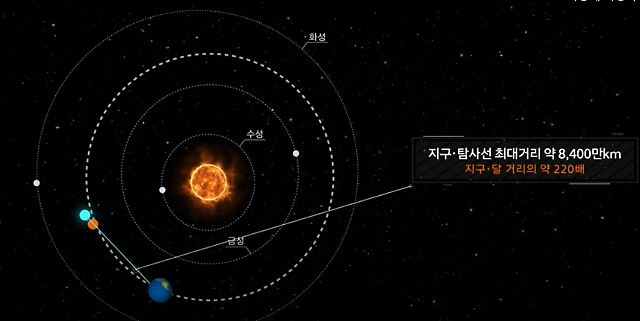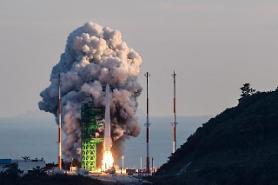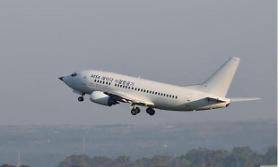
[Courtesy of Hanwha Systems]
SEOUL -- Hanwha Systems, a defense contractor affiliated with South Korea's Hanwha Group, joined South Korea's first asteroid exploration mission in April 2029 when Apophis makes a close approach to Earth. A homemade probe is to lift off in October 2027 for deployment in the orbit of Apophis to carry out scientific research and accumulate space technologies.
Hanwha Systems, which provides radar, optics, and communication and command systems, was selected as the preferred bidder that will design a space exploration standard platform for a homemade probe that will be deployed into the orbit of Apophis for observation and scientific research to accumulate space technologies.
The Ministry of Science and ICT has applied for a preliminary feasibility study for the Apophis exploration mission involving the Korea Astronomy and Space Science Institute (KASI), the Korea Aerospace Research Institute (KARI) and the Agency for Defense Development (ADD).
Hanwha Systems will conduct research on sensors and a propulsion system that allows the probe to fly into space on its own for a long time, as well as a system for designing fuel tanks. Hanwha Corp.'s propulsion system technology will be applied together with the technology of Satrec Initiative, a satellite company that provides various space components.
Hanwha Systems said that the Apophis project would greatly contribute to the development of domestic space exploration technology. "If the proportion of participation by private companies increases, technology will naturally be transferred, and private companies will be able to lead the entire space project," an unnamed Hanwha official said in a statement on March 30.
Hanwha System predicted that key technologies secured through the Apophis project can be used for lunar exploration. South Korea aims to launch a lunar orbiter and develop a lunar lander weighing more than 1.5 tons that would carry out scientific research on the surface of the moon in the 2030s.
Apophis with an estimated diameter of 370 meters will come no closer than 31,600 kilometers (19,600 miles) above Earth's surface. A KASI timetable showed that a probe weighing 534 kilograms should be launched in October 2017. It will sail for more than 12 months to approach Apophis for a two-month preliminary exploration. From April 14, 2019, when Apophis makes its closest known approach to Earth, the probe would conduct precise observation.
The payload would include a multi-wavelength polarization camera capable of collecting polarized light and a laser altimeter for the observation and precise tracking of asteroid surfaces and topographic changes according to the gravitational interaction between Earth and Apophis.
When Apophis approaches in 2029, gravity is expected to change the asteroid's orbit diameter and distort its rotation axis. South Korean researchers hope to study such natural experiments and accumulate technologies necessary for the scientific understanding of potentially hazardous asteroids.
Copyright ⓒ Aju Press All rights reserved.



